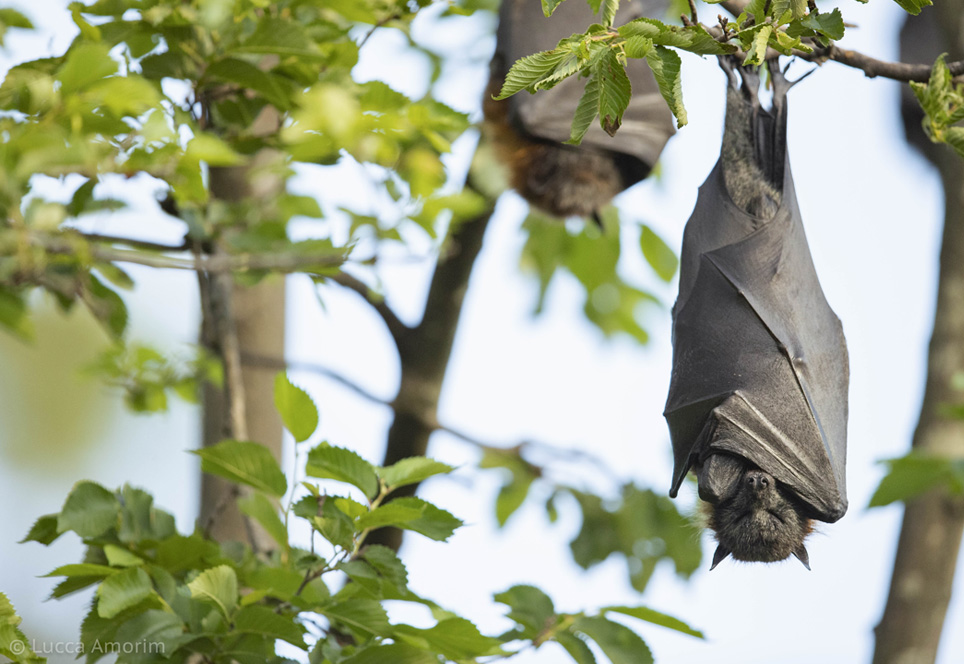Bats And The Challenges They Face In The Wild.
Bats are one of nature’s most exquisite creatures in the wild as they represent the only living mammal who is able to fly. However, they’re also a controversial topic and remain at the centre of many socioecological conflicts. Curiously, this not only affects bat populations around Australia but also stop the growth of native vegetation and a decrease of natural habitat in some scenarios.
Unfortunately bats are greatly misunderstood and suffer greatly due to this. Many times, this results in bat camp evictions, protests against bat colonies, and even animal controlling measures that sadly kill innocent creatures. However, what do bats really represent in the wild and why should they be conserved?

An adult grey-headed flying fox sleeps through the day while hanging from its perch.
The Wild Farmers.
Although smelly, bat colonies bring forth a variety of benefits to the ecosystem surrounding it. Mainly, bats act as flying farmers spreading forth the seeds consumed through fruits while generating new life and rejuvenating forests and bushland. Another benefit of this is that bat colonies provide fertile soil to the plants that inhabit there. Therefore allowing the plants to reproduce and grow while giving other species the opportunity to feed off the vegetation and contributing to the ecosystem’s sustainability.

A male grey headed flying fox flying through the trees..
Additionally, bats also play a vital role in insect control. Therefore carefully stabilising the ecosystem around them to allow a balanced life cycle and create opportunities for other species. Sadly, in spite of all of their roles in a balanced environment, bats are not protected and face hardships through colony evictions, heat waves, barbed wires, and fruit nets. Here’s why.
The Hardships.
It’s a common misconception that bats are vampires and they only suck blood. It’s also believed that bat colonies and bats transmit diseases to humans. However, much contrary to belief, most bats only eat fruit and do not transmit diseases to humans. It is key to understand that bats can only transmit diseases if their saliva enters the human bloodstream. Sadly, due to these misconceptions humans actively target bats as an unwanted species.

The last flight” - A grey-headed flying fox returns to its perch after a night out in the urbanity.
Unfortunately, this has become an increasingly common socioecological problem due to a migration of bats in search of abundant resources in urban centres. Therefore creating unhappy residents who rally against colonies and intentionally put up fruit nets to disrupt bat colonies and create bat-free environments.
The Loss.
Late 2019/Early 2020 was one of these challenging times for bat colonies where populations were decimated due to the toxic bushfire fumes, nets, and barbed wires. Sadly, losing a huge percentage of their population and leaving thousands of bats in rehabilitation.

Falling victim to the toxic bushfire fumes, a grey-headed flying fox lays lifeless on the forest floor..
Now in 2022, bats still suffer casualties to different man made agents while still yearly putting hundreds of bats into wildlife rehabilitation centres- a sad reality for a key species in the Australian ecosystem.
The Fight For Survival.
Fortunately, there is still time to act and much to do to save Australian bats. You can start by spreading awareness on the on-going socio-ecological conflicts between bats and humans while debunking misconceptions with people. However, you can support organisations that rescue bats and fight for their protection.

“Crash Landing” - a grey headed flying fox descends on a crowded branch as he looks for a landing spot.
.
Click here if you’d like to support an organisation, but before you do, remember to always strive for a better future for our wildlife and that it’s our duty to protect them when in danger.
Thank you for tuning in and for your support!